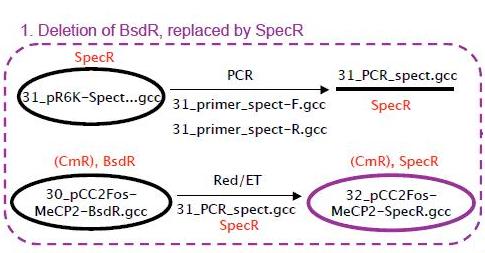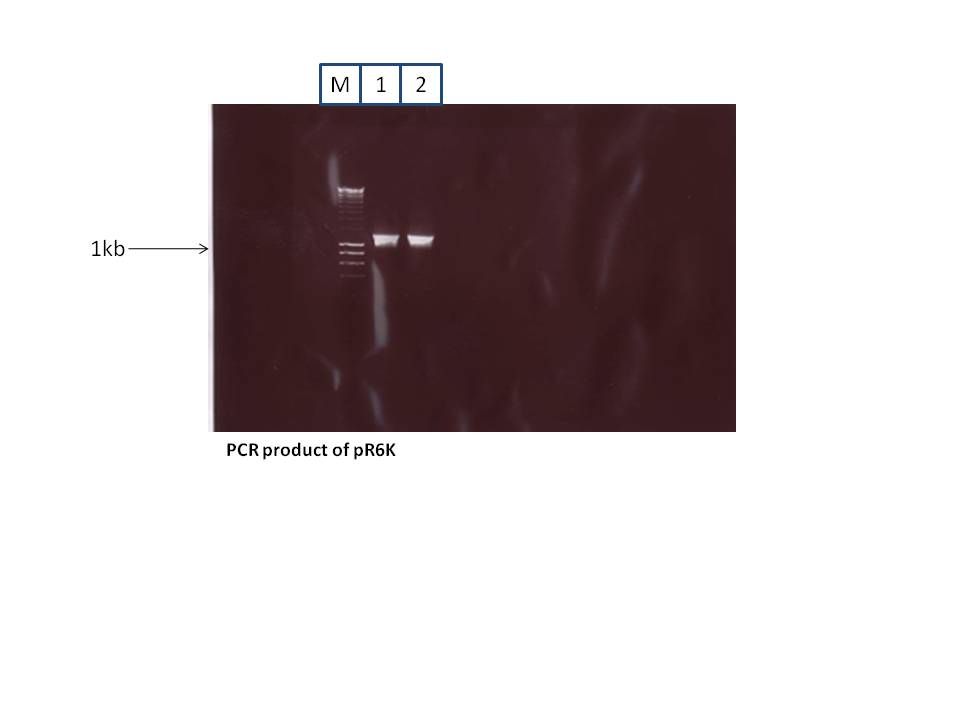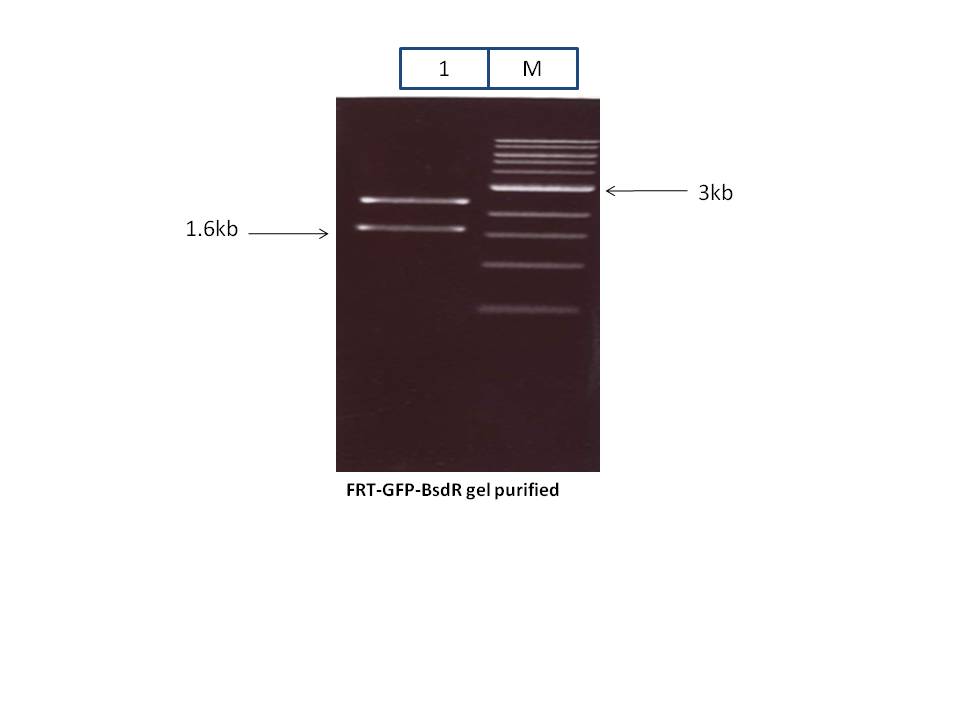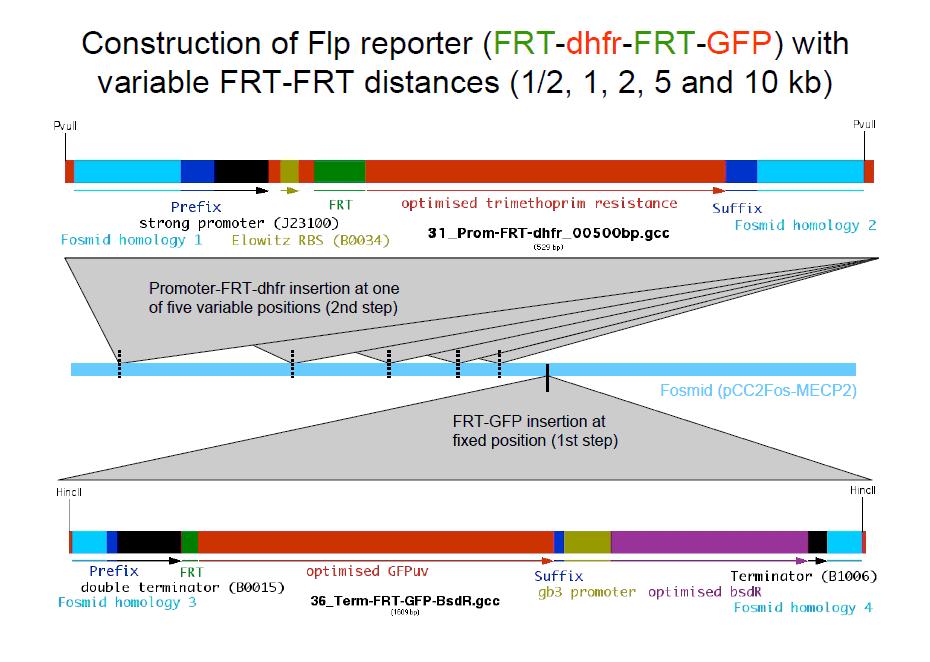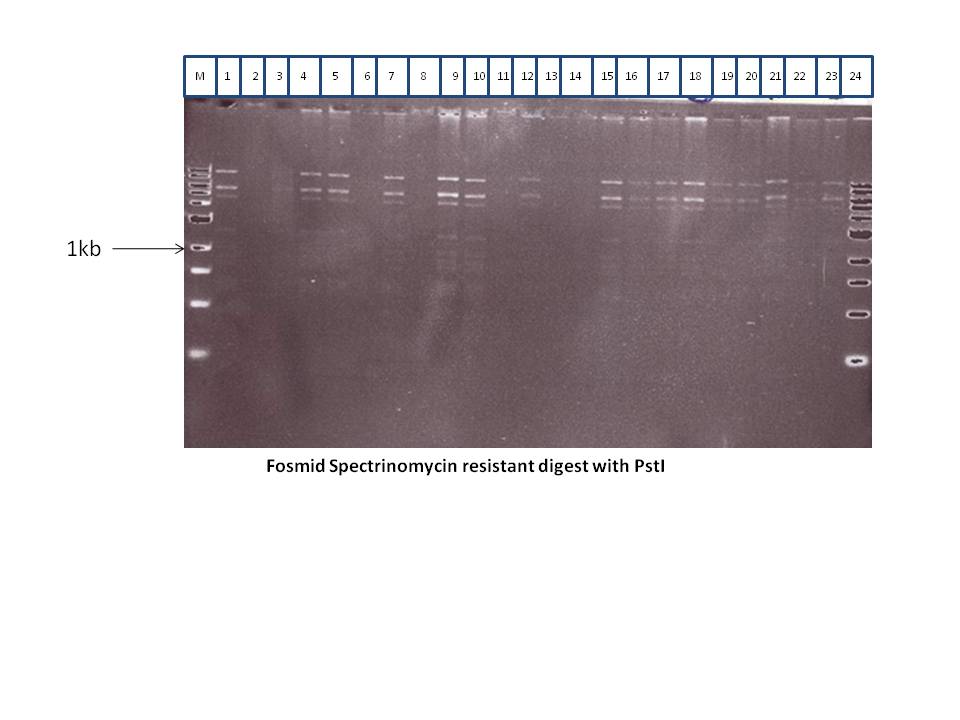Construction of Fosmid
From 2009.igem.org
As shown in the scheme above, the SpecR gene which confers Spectinomycin resistance was amplified from the pR6K-Spect plasmid (from Stewart lab). The pCC2 Fosmid MeCP2 (from Stewart lab) has BsdR (blasticidin resiustance) and CmR (chloramphinicol resistance). The BsdR is required at a later stage of the project, so it is replaced by SpecR. The PCR product is as shown below.
Red/ET was done to replace BsdR by SpecR. The resulting fosmid when digested with EcoRI is as shown in the gel pic below.
The fosmid is present in a single copy, so re-electroporation for purification is not required.
As shown in the strategy above, the TT FRT GFP-BsdR was digested and inserted into the Fosmid by Red/ET.
TT FRT GFP BsdR (from GeneArt) is as shown in Fig 12 (the fragment at the bottom). There is a terminator followed by a FRT site. There is a RFP downstream of the FRT site and a Bsd selection. The blue regions flanked by the HincII sites are the homology arms that would enable the insertion of the cassette into the fosmid. This is inserted at a fixed position in the fosmid.
In Fig 12, the fragment shown at the top is FRT-dhfr-00500bp (from GeneArt). There were 5 such fragments (these plasmids were ordered from GeneArt). The fragments are flanked by different homology arms to enable their insertion into the fosmid at variable positions. The distances from the fixed FRT site (in TT FRT GFP BsdR) are 500bp, 1kb, 2kb, 5kb and 10 kb. The fragments at variable distances have a dhfr gene that confers trimetioprim resistance.
The TT FRT GFP-BsdR was digested using HincII. The gel was shown below
The lower band of size was isolated and purified from the gel. Red/ET was done to insert this fragment into the fosmid.
 "
"
